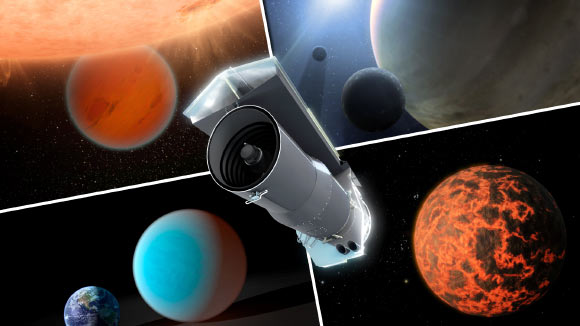NASA Retires Spitzer Space Telescope | Astronomy – Sci-News.com
After more than 16 years studying the Universe in infrared light, NASA’s Spitzer Space Telescope has been placed in safe mode.

NASA’s Spitzer Space Telescope was placed in safe mode on January 30, 2020 at 5:30 p.m. EST (2:30 p.m. PST). Image credit: NASA / JPL-Caltech.
Launched in 2003, Spitzer was one of NASA’s four Great Observatories, along with the Hubble Space Telescope, the Chandra X-ray Observatory and the Compton Gamma Ray Observatory.
“Spitzer has taught us about entirely new aspects of the cosmos and taken us many steps further in understanding how the Universe works, addressing questions about our origins, and whether or not are we alone,” said Dr. Thomas Zurbuchen, associate administrator of NASA’s Science Mission Directorate.
“This Great Observatory has also identified some important and new questions and tantalizing objects for further study, mapping a path for future investigations to follow. Its immense impact on science certainly will last well beyond the end of its mission.”
Spitzer’s prime mission came to an end in 2009, when the telescope exhausted its supply of the liquid helium coolant necessary for operating two of its three instruments: the Infrared Spectrograph (IRS) and Multiband Imaging Photometer for Spitzer (MIPS).
The mission was deemed a success, having achieved all of its primary science objectives and more. But the Spitzer engineers and scientists were able to keep the mission going using only two out of four wavelength channels on the third instrument, the Infrared Array Camera (IRAC).
Among its many scientific contributions, Spitzer studied comets and asteroids in our own Solar System and found a previously unidentified ring around Saturn.
The telescope studied star and planet formation, the evolution of galaxies from the ancient Universe to today, and the composition of interstellar dust.
In 2014, it detected evidence of asteroid collisions in a newly-formed planetary system, providing evidence that such smash-ups might be common in early solar systems and crucial to the formation of some planets.
In 2016, Spitzer worked with Hubble to image the most distant galaxy ever detected.
The telescope also observed the TRAPPIST-1 planetary system — a system of seven Earth-size exoplanets — for more than 1,000 hours.
In 2016, following a review of operating astrophysics missions, NASA made a decision to close out the Spitzer mission in 2018 in anticipation of the launch of the James Webb Space Telescope, which also will observe the Universe in infrared light.
When Webb’s launch was postponed, Spitzer was granted an extension to continue operations until 2020.
This gave the telescope additional time to continue producing transformative science, including insights that will pave the way for Webb, which is scheduled to launch in 2021.
“Everyone who has worked on this mission should be extremely proud today,” said Spitzer project manager Dr. Joseph Hunt.
“There are literally hundreds of people who contributed directly to Spitzer’s success, and thousands who used its scientific capabilities to explore the Universe. We leave behind a powerful scientific and technological legacy.”
“I think that Spitzer is an example of the very best that people can achieve,” said Spitzer project scientist Dr. Michael Werner.
“I feel very fortunate to have worked on this mission, and to have seen the ingenuity, doggedness and brilliance that people on the team showed. When you tap into those things and empower people to use them, then truly incredible things will happen.”






